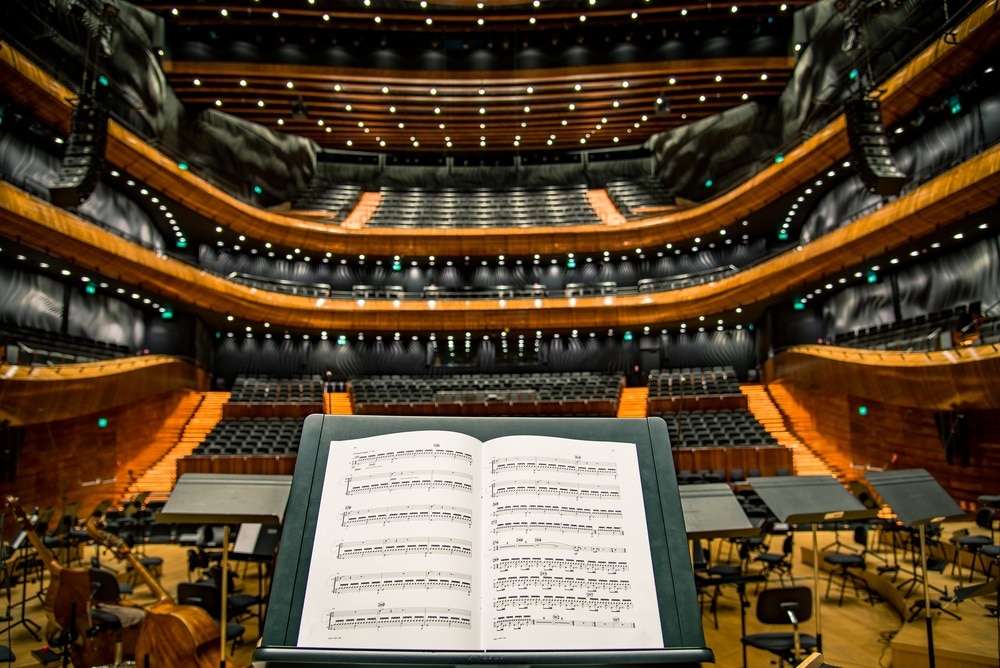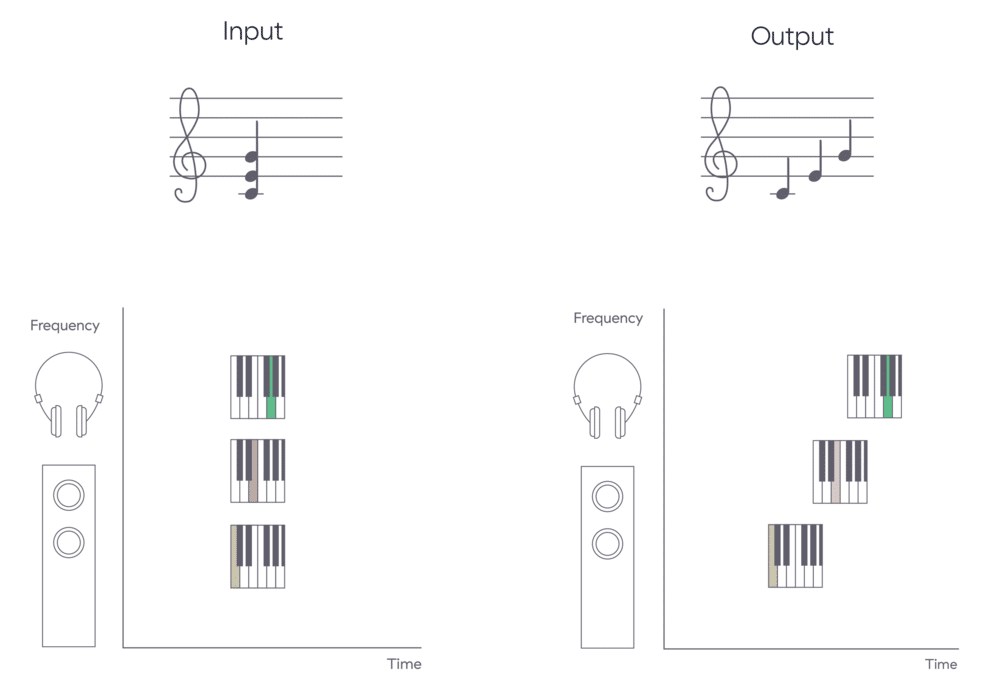In Music, Timing is Everything


When you’re listening to music and something feels off, it can usually be attributed to at least one of two factors. Either something is out of key— for instance, an instrument isn’t tuned properly or a singer can’t sing. Or someone is missing a beat. If each musician in an orchestra were to play at their own tempo it would sound differently than intended, and likely pretty bad. The first of these factors is a question of frequency for a single sinusoid (does each note sound like it should?). The second is a property of time (does each note arrive when it should?).
When it comes to audio reproduction, timing properties are very important. I don’t know of a single audio system on the market that will change the tempo of music, or time-shift individual instruments on a recording. However, all audio systems will somehow shift the content of recorded music in time. At least if the music is reproduced by a loudspeaker in a room.
“All audio systems will somehow shift the content of recorded music in time. At least if the music is reproduced by a loudspeaker in a room. ”
This behavior can be explained by the phase of a system. A phase can be thought of as a frequency dependent delay. As such it will shift around the content of a recording, depending on the recording’s frequency content rather than what instrument it is. The question is, does this matter at all?
The thing that makes a piano sound like a piano, and a flute sound like a flute is the harmonics produced by these instruments. Playing an A note at 440Hz will sound different on a flute than a piano, even though the fundamental frequency is the same. Harmonics are additional sinusoids in multiples of 440Hz, with varying amplitude. An instrument, or even a singer, is characterized by these additional tones. Reproducing a perfect recording of an instrument on a system that does not have a constant phase will shift these harmonics differently in time (a frequency dependent delay).


Due to the frequency dependent, time smearing nature of audio systems, musical notes intended to be played back simultaneously become blurred and spread out in time.
Ok, Roger that. But again, does it matter?
The answer is… well, it depends. With a stationary signal, like a sawtooth wave for instance, you can shift the harmonics around in time and you will not be able to tell the difference. However for more dynamic content, like music, you just might. Especially for short notes that have a well defined beginning and end, the smearing of the note’s content in time will certainly be audible. This is also the reason why the term transient response pops up fairly often when discussing the properties of an audio system, and why some people seem to prefer closed speaker cabinets over bass reflex cabinets.


The transient response of a loudspeaker can be understood by examining what happens to a perfect spike-like signal, or impulse, of very short duration when it is played back through the system. The resulting sound pressure signal that reaches the listener’s position is called the impulse response. The upper graph shows the impulse response of a typical two-way HiFi loudspeaker. The impulse has been smeared out in time by the loudspeaker. The lower graph shows the impulse response after Dirac Live room correction has been applied. Clearly, the previously smeared-out sound wave has been restored to a more spike-like one, bearing a much better resemblance to the original impulse.
Another clear example of when the phase obviously matters is when it comes to the polarity of speakers. Try connecting one of your stereo-paired speakers with reverse polarity. Does it sound different? Does it sound good? For most people the answer is: Yes, it sounds different… but not for the better. Connecting the speaker with reverse polarity equals a 180 degree (constant) phase shift. The effect on your music is that the stereo imaging will be completely destroyed. For a good stereo image you want your two speakers to have a phase response that is as similar as possible. Exactly what it looks like is less important than the similarity itself (within reasonable limits of course).
Alright, so it seems that phase may have a detrimental effect on my music experience. What are the contributing factors?
The answer is that all of the components are likely to have some effect. However, the speaker cabinet design, the cross over, and the room interaction are probably the three biggest contributors.
All in all, when we listen to music we prefer that the instruments are in key, and that the musicians are playing their notes on time. In the same way, we want a room correction system that not only makes the complete system deliver each sinusoid at the correct frequency, but also at the right time.
– Jakob Ågren, Product Manager at Dirac Research
Learn about Dirac’s solutions for digital speaker optimization and room correction here